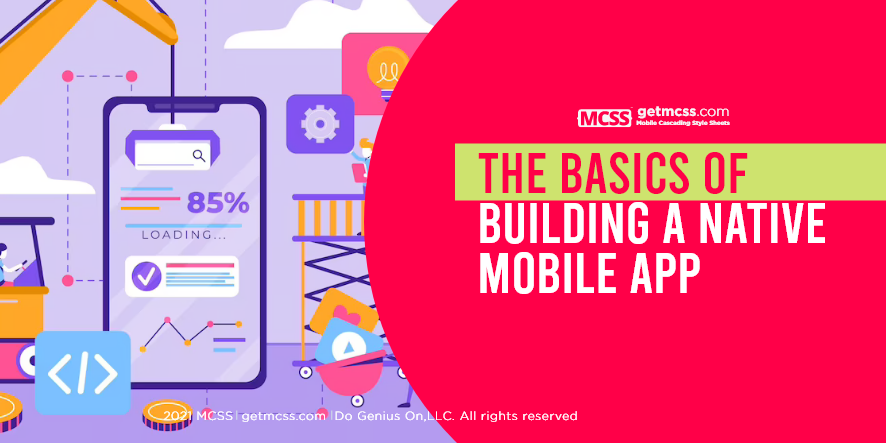Building a native mobile app requires understanding key concepts, choosing the right tools and programming languages, and adhering to platform-specific design guidelines. In this article, we'll explore the basics of building a native mobile app, including the advantages of native apps, the development process, and important considerations to keep in mind.
1. Advantages of Native Mobile Apps
Native mobile apps offer several benefits compared to hybrid or web apps, such as:
-
Performance: Native apps are developed specifically for a platform, allowing them to take full advantage of the device's hardware and software capabilities, resulting in better performance.
-
User Experience: Native apps follow platform-specific design guidelines, ensuring a consistent and intuitive user experience.
-
Access to Device Features: Native apps have greater access to device features, such as the camera, GPS, and accelerometer, enabling more advanced functionality.
-
Offline Capabilities: Native apps can function without an internet connection, providing a seamless user experience even in offline scenarios.
2. Choosing the Right Tools and Programming Languages
2.1 iOS
For iOS app development, you'll need:
-
Xcode: Apple's integrated development environment (IDE) for creating iOS apps.
-
Swift: The primary programming language for iOS app development. Objective-C can also be used but Swift is more modern and widely recommended.
-
Cocoa Touch: The UI framework for building iOS apps.
2.2 Android
For Android app development, you'll need:
-
Android Studio: Google's official IDE for creating Android apps.
-
Java or Kotlin: The primary programming languages for Android app development. Kotlin is recommended as it is more modern and concise compared to Java.
-
Android SDK: The software development kit (SDK) required for building Android apps.
3. Platform-Specific Design Guidelines
To ensure a consistent and intuitive user experience, it's essential to follow platform-specific design guidelines when building native mobile apps.
3.1 iOS
Apple's Human Interface Guidelines provide comprehensive information on designing iOS apps, including app architecture, navigation, user interface, and visual design.
Key aspects to consider:
-
UIKit: The core framework for designing iOS app UIs, providing components such as navigation bars, tables, and buttons.
-
Large Titles: Use large titles for main app sections to enhance navigation and readability.
-
Adaptive Layouts: Design apps to be responsive and adapt to different screen sizes, orientations, and devices.
3.2 Android
Google's Material Design guidelines offer detailed instructions on designing Android apps, covering app structure, navigation, components, and theming.
Key aspects to consider:
-
Material Components: The core set of UI components for building Android apps, including buttons, cards, and lists.
-
App Bar: Use an app bar to provide navigation and actions in your app.
-
Responsive Design: Create flexible layouts that adapt to different screen sizes, resolutions, and devices.
4. App Development Process
The process of building a native mobile app typically involves the following steps:
-
Planning: Define the app's purpose, target audience, and key features.
-
Data modeling.- Create a data model if necessary, to store the data in our devices.
-
Wireframing and Prototyping: Create wireframes and prototypes to visualize app structure, navigation, and user flows.
-
UI/UX Design: Design the app's user interface and user experience following platform-specific guidelines.
-
Development: Write the app's code using the chosen programming language and tools.
-
Testing: Perform thorough testing to identify and fix bugs, ensuring the app's functionality and performance.
-
Deployment: Publish the app to the appropriate app store (App Store for iOS or Google Play Store for Android).
5. App Maintenance and Updates
After deployment, it's crucial to maintain and update the app regularly to address user feedback, fix bugs, and add new features. Regular updates help improve the app's performance, security, and user experience, ensuring long-term success.
5.1 Monitoring and Analytics
To make informed decisions about app updates, it's essential to monitor app performance and user behavior. Utilize analytics tools like Google Analytics for Firebase or Apple's App Analytics to track key metrics such as user engagement, retention, and in-app conversions.
5.2 Responding to User Feedback
Pay close attention to user reviews and feedback on the app stores. Responding to user concerns and implementing their suggestions can help improve your app's overall user experience and increase its rating on app stores.
5.3 Regular Updates
Schedule regular updates to address bugs, improve performance, and introduce new features. Stay up-to-date with platform updates and ensure that your app remains compatible with the latest operating system versions.
6. Leveraging the MCSS Framework for Native App Development
The MCSS framework is a low-code solution that can help streamline native app development, reduce costs, and improve efficiency. By leveraging MCSS, developers can:
-
Accelerate Development: The MCSS framework simplifies and automates many aspects of native app development, allowing developers to focus on delivering value and reducing time-to-market.
-
Reduce Costs: By providing reusable components and pre-built templates, the MCSS framework can significantly reduce development costs compared to traditional native app development.
-
Ensure Consistency: The MCSS framework enforces best practices and platform-specific design guidelines, ensuring that your app delivers a consistent and high-quality user experience.
In conclusion, building a native mobile app requires understanding the advantages of native apps, choosing the right tools and programming languages, adhering to platform-specific design guidelines, and following a structured development process. By leveraging frameworks like MCSS, developers can streamline the development process, reduce costs, and deliver high-quality native apps that meet user expectations and provide a superior user experience.
References
Apple Inc. (n.d.). Human Interface Guidelines. Retrieved from https://developer.apple.com/design/human-interface-guidelines/
Google LLC. (n.d.). Material Design. Retrieved from https://material.io/design
Manferdini, M. (n.d.). Swift Guard: Why You Should Use It and How to Get the Most Out of It. Retrieved from https://matteomanferdini.com/swift-guard/
Swift.org. (n.d.). The Swift Programming Language. Retrieved from https://swift.org/documentation/
The Android Open Source Project. (n.d.). Android Developers. Retrieved from https://developer.android.com

